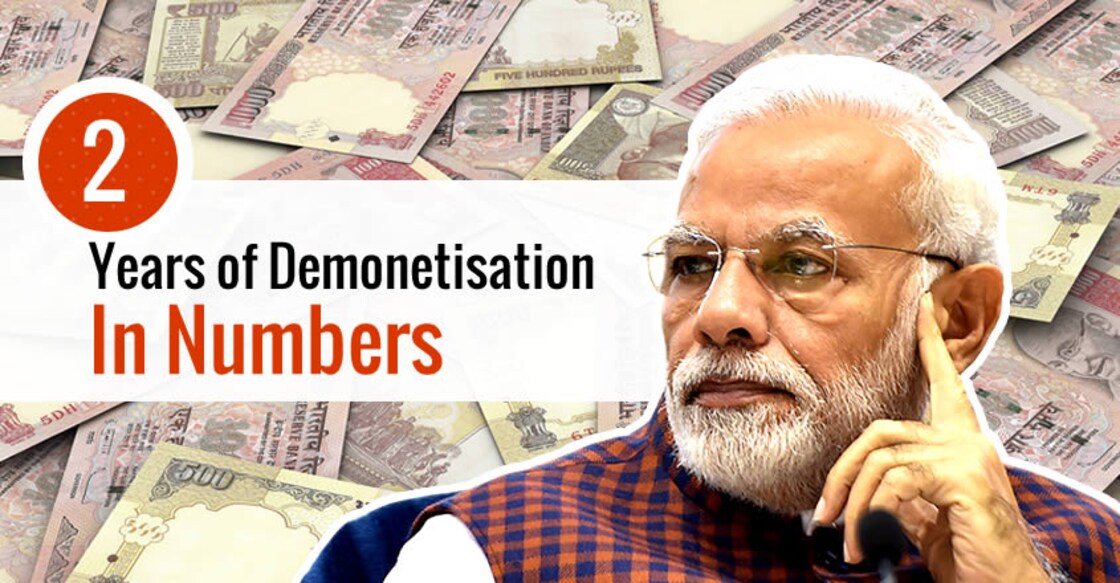Two years after demonetisation: Is India a digital economy yet?

Mail This Article
Two years have passed since 86 per cent of Indian currency notes lost their value overnight. When prime minister Narendra Modi announced the scrapping of 1,000-rupee and 500-rupee notes on November 8, 2016, he claimed it was a fight against corruption, black money and terrorism. As an afterthought, the government added 'cashless economy' to the list of motives.
How far has India moved towards a digital economy two years down the line. Here are some facts.
» About 86 per cent of the notes in circulation - 685.8 crore pieces of 1,000 rupee-notes (Rs 6,85,782 crore) and 1,716.5 crore pieces of 500 rupee-notes (Rs 8,58,253 crore) - were sucked out of the monetary system at the stroke of midnight on November 8, 2016.
» As much as 99.30 per cent of the currency notes pulled out of circulation on November 8, 2016 have been returned, the Reserve Bank of India said.
»Of the Rs 15.41 lakh crore worth of Rs 500 and Rs 1,000 notes that ceased to be legal tender two years ago, notes worth Rs 15.31 lakh crore have been deposited in banks surprising those who assumed that a large part of the demonetised money was black money.
» There was a spike in mobile banking after the demonetisation.

» With the government curbing the amount of cash a person could hold, people turned to e-wallets such as MobiQwik, Phonepe, Oxigen, FreeCharge and Citrus Pay.
» Digital transactions increased too. The National Payment Corporation of India started the Unified Payment Interface (UPI) in 2016 to simplify digital transactions.

»The value of money transacted through the UPI increased 18 percent from December 2017 to January 2018.



» The number of banks which have got themselves on the UPI platform increased from 29 at launch to 71 now.

» Transactions through point-of-sales machines increased too as more people began to use their debit and credit cards.

»The number of POS sales increased 1.43 per cent from December 2017 to January 2018.
»However, the transacted value dipped 3 per cent in the same period.

» Enforcement agencies seized fake currency notes of Rs 13.8 crore face value from across the country since demonetisation. Of this, Rs 5.94 came from Gujarat, according to figures available with the National Crime Records Bureau.

» The RBI said the total cost incurred on printing notes stood at Rs 7,965 crore for the financial year ended March 2017, compared with Rs 3,420 crore in the previous year, due to the introduction of new note after demonetization.

» The Indian Air Force spent more than Rs 29.41 crore to ferry the newly issued Rs 2,000 and Rs 500 notes after demonetization, an RTI query would reveal in July 2018. The IAF’s frontline transport aircraft, the C-17and the C-130J Super Hercules, undertook 91 sorties to transport bundles of currency from the security printing presses and mints to various destinations across the country.

» Growth slowed to 6.1 per cent in the first full quarter after demonetization and moderated further to 5.7 per cent in the subsequent three months. In April-June quarter, Indian economy grew 8.2 per cent, surpassing China's growth rate of 6.7 per cent.

» India overtook France to become the sixth largest economy in 2017, according to a World Bank report released in July 2018. India now stands behind the United States, China, Japan, Germany and England.


